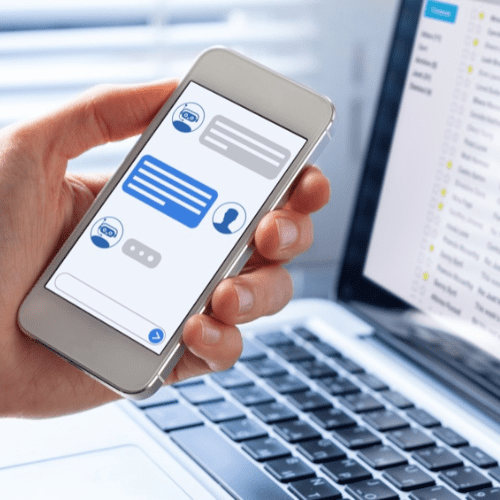By 2024, consumer retail spend via chatbots is predicted to reach $142 billion worldwide.
A recent Forrester report shows that the uptake of chat services is growing rapidly, both on brands’ own websites or apps and third-party platforms, such as Messenger or WhatsApp. However, while chatbots and virtual assistants are now widely used to handle simple customer service queries, customers’ use of chat for retail activities lags behind.
How do customers use chat during their shopping?
Forrester’s March 2022 Consumer Energy and Retail Pulse Survey revealed that, while 31% of UK customers had contacted brands through messaging platforms during the past six months, and 26% had used chat on a company website for help to make a purchasing decision, only 19% had used a chatbot to place an order for a product or service.
‘Consumer engagement with conversational interfaces such as chatbots is fragmented’ – Forrester
Forrester’s research found that, while brands’ websites are where consumers are most likely to use chat, they are equally likely to discover and engage with brands through apps, third-party messaging platforms and search results in a browser. Furthermore, while 50% of US online adults used chat to transact at least monthly, 42% reported preferring a graphical user interface (GUI) for purchasing, and only 10% expressed a preference for chat for commerce activities.
Chat influences purchasing decisions
Awareness of chat for commerce activities is considerably higher than either usage or preference: in the same Forrester survey, 87% of US adults said they were aware of chat functionality, compared with 91% awareness of GUI and 57% awareness of integrated voice response (IVR) functionality. However, preference for chat was only slightly higher than that for IVR, a channel with which customers frequently report dissatisfaction.
Nearly half of respondents said that the chat interaction influenced their decision to buy a product or service, and one quarter said it influenced their decision not to buy.
For those customers who do use chat, starting a conversation on a third-party messaging platform or from a ‘click-to-chat’ link in search results were the most likely activities to influence a purchasing decision. So, it’s clear that using chat in the shopping process, particularly at an early stage in the customer journey, has an impact on purchasing decisions. In that case, why aren’t more consumers using it?
Retail chat experiences: expectations versus reality
Customers want their shopping experience to be both easy and effective – and chatbots don’t always live up to their increasingly high expectations. According to Forrester, only 66% of retail customers who used chat reported a positive experience with the channel’s effectiveness at completing tasks. In response, messaging platforms are rolling out new features to support the full commerce cycle and improve customer experience (CX) – but will this persuade retail customers to change their habits? The challenge for brands is to create a strategy that embeds chat within the customer purchase journey.
Take a CX-driven approach to chat
When choosing a chat solution, it’s vital to analyse the entire customer experience journey and pinpoint the moments which drive the greatest customer and business benefits – these are the ones you need to prioritise. Map the content, services, and features you need to serve your customers in those moments, creating use cases to define customer and systems touchpoints.
If you’re already using chat, remember that negative feedback from customers can be especially useful, as it offers insights into what went wrong. Chatbot technology is advancing rapidly, and intelligent chatbots which make use of ‘conversational AI’ can offer a conversational experience that closely mimics human agents.
‘Personality traits of chatbots can be one of the key differentiators in the market’ – Forbes
Additionally, you need to ensure that your chatbot reflects the nature of your business. There’s now a wide variety of chatbots available, but not all are suitable for the sales process. Tone of voice, formality of language, and use of humour can all make or break an interaction: if any of these is perceived as inappropriate, it will negatively impact on purchasing decisions.
At redk, we have over 15 years’ experience in digital transformation, working with our expert partners to advise on and implement the technical solutions that work best for your company. Talk to us to find out how we can help you optimise your sales performance and deliver a great customer experience.










